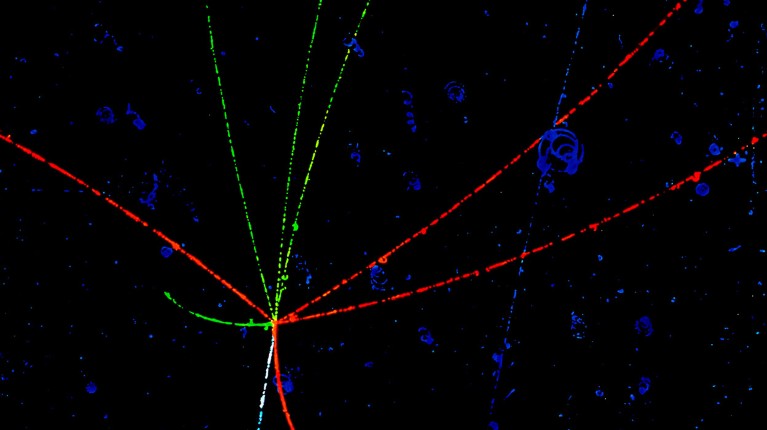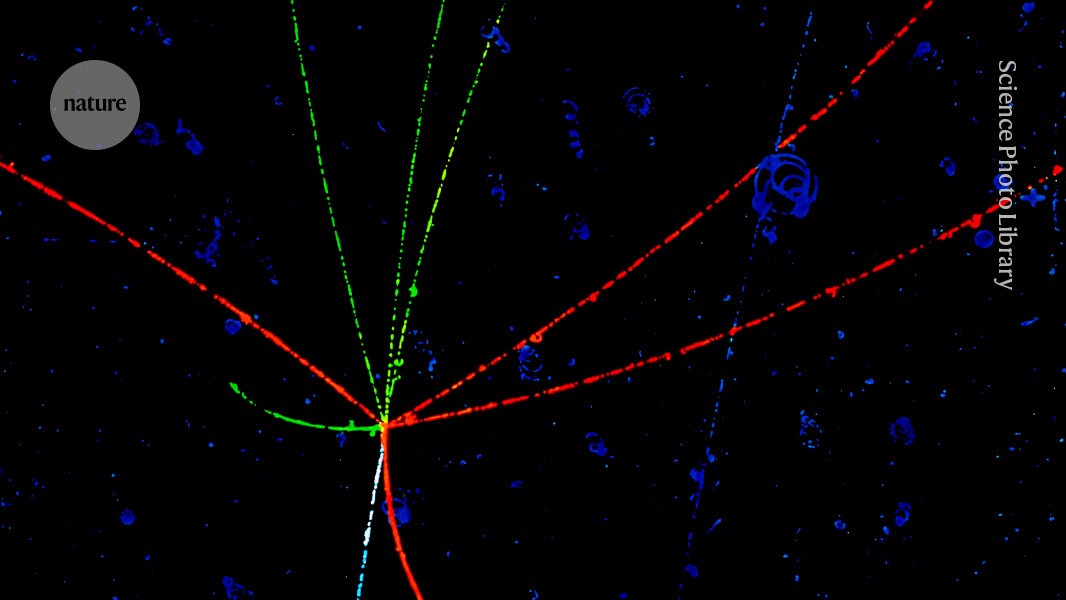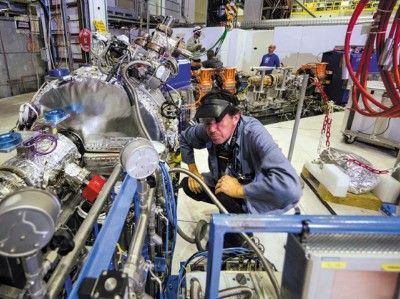
A photograph of antimatter particle (pale blue) meeting a matter particle and being annihilated.Credit: Science Photo Library
Physicists have, for the first time, seen a matter particle from the proton family behave fundamentally differently to its antimatter twin. The finding — which fits with behaviours predicted by the standard model of particle physics — could help researchers in their struggle to explain why matter is so abundant compared with antimatter, something that current theories cannot do.
“I am personally very excited about this measurement,” says Yuval Grossman, a theoretical physicist at Cornell University in Ithaca, New York. Although the latest finding cannot by itself explain matter’s dominance over antimatter, “it is another piece of the puzzle,” he says.
The race to reveal antimatter’s secrets
The finding, from the LHCb experiment at CERN, Europe’s particle-physics laboratory near Geneva, Switzerland, was presented at the Rencontres de Moriond conference in La Thuile on 24 March and posted on the arXiv preprint server1.
Understanding differences between matter and antimatter — particles of the same mass but opposite charge — is important because without them, nothing would be here. When the two substances meet, they annihilate. That poses a problem for physicists: if both were created equally in the Big Bang and behaved the same, as most physical laws suppose, it’s difficult to explain how anything would remain.
Ordinary matter
Although certain tiny differences in behaviour have been observed between some types of matter and antimatter, they have never been seen in baryons – particles that make up most of the Universe’s visible matter. Baryons consist of three quarks , and include protons and neutrons.
In the latest work, researchers observed subtle differences between the decay rates of a particle called the beauty-lambda baryon and its antimatter counterpart into other products. The team analysed data from 2009 to 2018 on a certain decay of the baryons into a proton and three mesons — light, unstable particles comprising two quarks.
The evidence for a difference in decay rate between the matter and antimatter versions of the beauty-lambda baryon was overwhelming. Physicists calculated that the odds of such a discrepancy occurring by chance as less than 1 in 3 million.
The discovery is “a major milestone”, says Tim Gershon, a particle physicist at the University of Warwick, UK, who is part of the LHCb collaboration.



